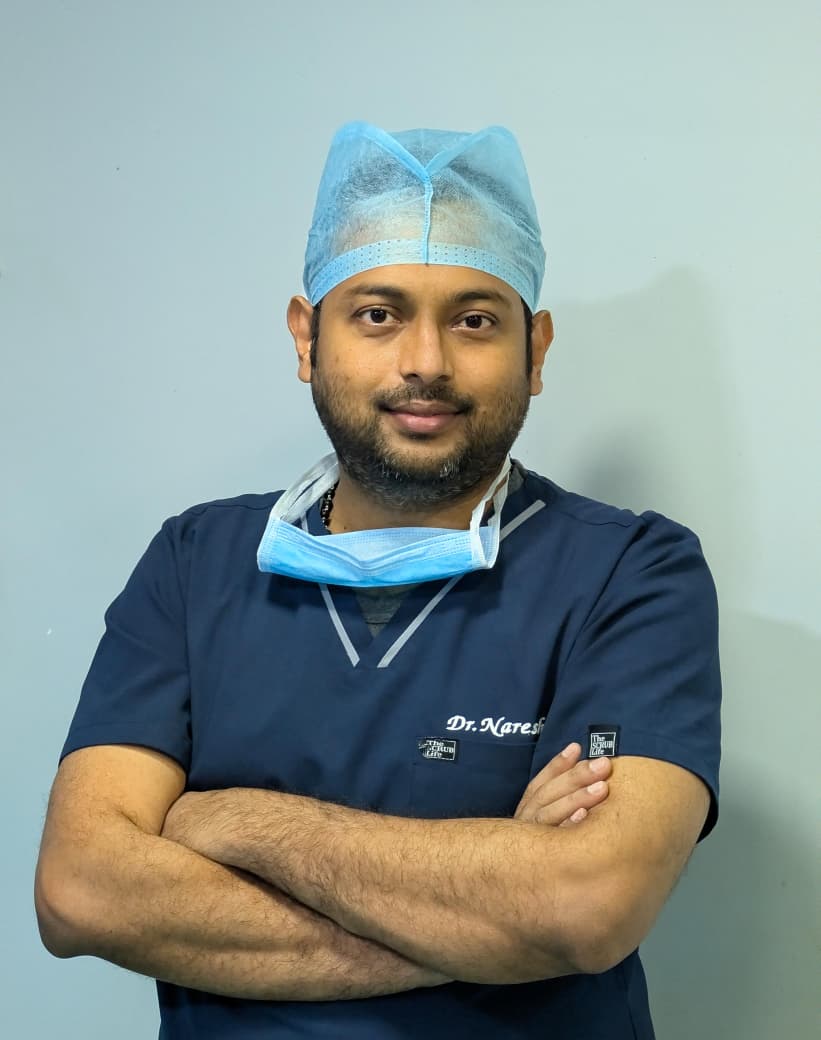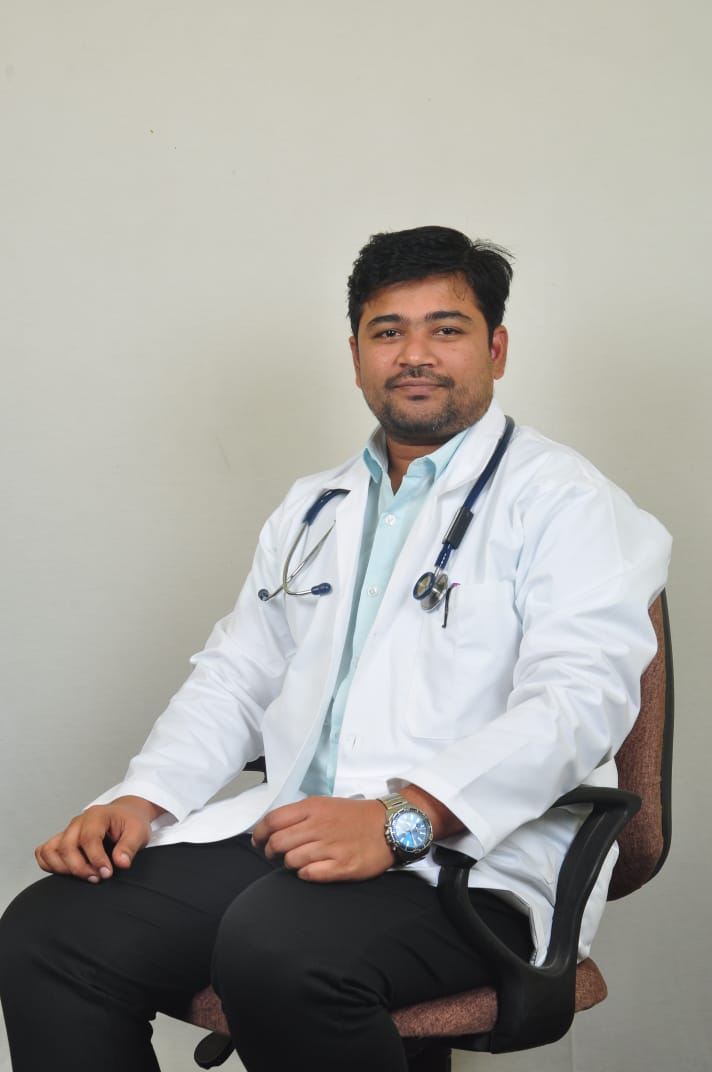Anterior cruciate ligament (ACL) tear commonly occurs in people who have an active lifestyle and play physical sports. ACL tear does not heal on its own and needs prompt treatment to restore normal function. If you are looking for the most effective ACL reconstruction treatment, get in touch with HeptaCare Health near you today.
Happy Patients
Disease
Hospitals
Cities
An anterior cruciate ligament (ACL) injury is a tear or sprain on the anterior cruciate ligament in the knee. The anterior cruciate is a ligament located on the inside of the knee joint. It usually occurs in individuals who participate in athletic activities such as football, basketball, soccer, etc. In many cases, individuals hear a pop or feel a popping sensation in the knee when an ACL injury occurs.
The treatment procedure for ACL depends on the type and the severity of the injury. Severe ACL tear typically does not heal on its own, and prompt treatment is required to get rid of constant pain and discomfort. In minor cases of ACL tear, rest and rehabilitation exercises help you regain strength and stability.
During diagnosis, a doctor conducts a physical exam to check the swelling and tenderness in the knee. A doctor also moves the knee into various positions to assess the range of motion and overall function of the joint. Moreover, a doctor suggests a variety of imaging tests to rule out other causes and to determine the severity of the injury. These tests may include:
Different treatment options for ACL reconstruction surgery are as follows:
Surgical treatment option:
Non-surgical treatment options:
Non-surgical treatment options include:
Arthroscopic ACL reconstruction surgery provides various benefits, including:
Weeks 1-3: Initial Recovery Phase
Focus: Manage pain and swelling, begin gentle range-of-motion exercises, and initiate muscle activation.
Activities:
Use of ice and elevation to control inflammation.
Engage in isometric exercises to activate the quadriceps muscles.
Gradually increase knee mobility through gentle stretching and bending exercises.
Weeks 4-6: Strengthening Phase
Focus: Enhance muscle strength and improve knee mobility.
Activities:
Incorporate resistance exercises targeting the quadriceps and hamstrings.
Begin stationary cycling to promote joint mobility and muscle endurance.
Perform closed-chain exercises like partial squats and step-ups.
Weeks 6-12: Advanced Strengthening and Proprioception
Focus: Develop neuromuscular control and prepare for functional movements.
Activities:
Introduce balance and proprioception exercises using balance boards or single-leg stands.
Progress to more dynamic activities, such as light jogging on even surfaces.
Continue strength training with increased resistance and complexity.
3-6 Months: Functional Training
Focus: Prepare for return to sports or high-level activities.
Activities:
Engage in sport-specific drills and plyometric exercises.
Perform agility training, including lateral movements and pivoting exercises.
Gradually increase the intensity and duration of physical activities.
6-12 Months: Return to Sport
Focus: Safely resume competitive sports and high-impact activities.
Activities:
Undergo functional assessments to ensure readiness for sport.
Continue maintenance exercises to support knee health and prevent re-injury.
Gradually reintroduce full sports participation as advised by healthcare professionals.
Potential Risks and Complications of ACL Surgery
While ACL reconstruction is generally successful, potential risks include:
Anterior Knee Pain: Discomfort around the kneecap, especially with patellar tendon grafts.
Stiffness (Arthrofibrosis): Limited knee mobility due to scar tissue formation.
Instability: Persistent knee instability, possibly due to surgical technique or additional injuries.
Graft Stretching or Failure: Potential elongation or rupture of the graft over time.
Infection: Rare but serious, requiring prompt medical attention.
Blood Clots: Risk of deep vein thrombosis post-surgery.
Rehabilitation for Athletes
Athletes may require a more intensive rehabilitation program to safely return to their sport:
Phase 1 (3-4 months post-surgery): Focus on regaining strength and flexibility.
Phase 2 (4-6 months post-surgery): Introduce low-level fitness and agility drills.
Phase 3 (5-8 months post-surgery): Incorporate jumping exercises.
Phase 4 (6-9 months post-surgery): Engage in sport-specific drills, including cutting maneuvers.
Phase 5 (9-12 months post-surgery): Gradually return to full sports participation with an emphasis on injury prevention.
Cost of ACL Surgery in India
The cost of ACL surgery in India typically ranges from ₹1,80,000 to ₹2,42,000. Factors influencing the cost include:
Type of anesthesia used.
Hospital location and associated charges.
Surgeon's fees and expertise. Patient's medical condition and comorbidities.
Type of graft utilized.
Need for additional procedures or extended rehabilitation.
Types of ACL Surgery Grafts
Common graft options for ACL reconstruction include:
Patellar Tendon Autograft: Utilizes the central portion of the patient's patellar tendon, including bone plugs from the kneecap and shinbone.
Hamstring Tendon Autograft: Harvests tendons from the hamstring muscles, often resulting in less post-operative pain.
Allograft: Involves using tendon tissue from a donor, reducing surgery time and eliminating the need for graft harvesting.
Selecting the Right Surgeon for ACL Surgery
When choosing an orthopedic surgeon, consider the following:
Experience: Look for a surgeon with a proven track record in ACL reconstructions.
Patient Reviews: Assess feedback regarding patient satisfaction and outcomes.
Credentials: Verify board certification and specialized training.
Hospital Affiliation: Consider the quality of the associated medical facility.
Accessibility: Ensure the surgeon is within a reasonable distance for consultations and follow-ups.


Based on 7721 Recommendations | Rated 4.68 Out of 5
Happy Patients
Clinics
Cities
Surgeries
Doctors
Hospitals
Getting an accurate diagnosis can be one of the most impactful experiences that you can have.

cure with care
Copyright © 2025. All rights reserved.
Consult with our expert surgeon for more than 50+ diseases
Happy Patients
Hospitals
Cities